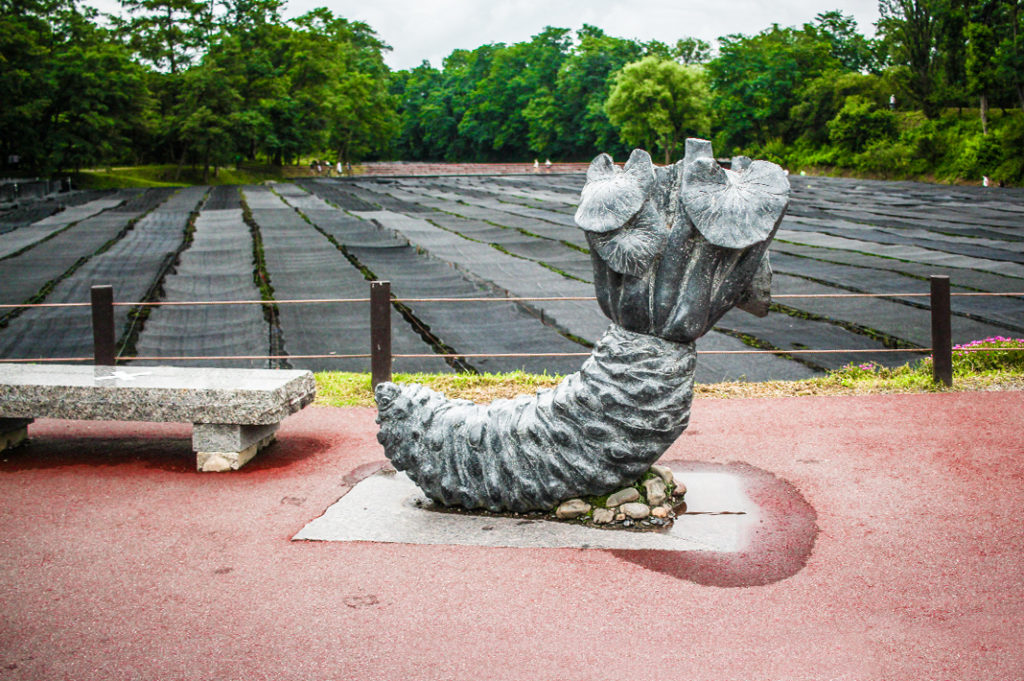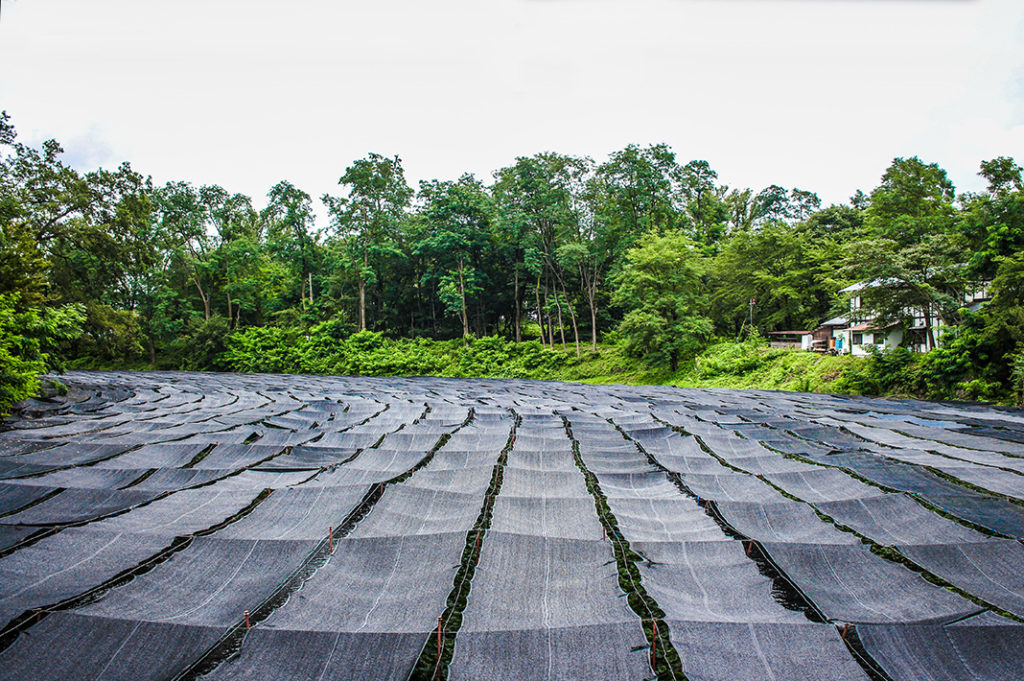
If you’d told me five years ago that one day I’d be pairing my steak with soy sauce and wasabi, rather than gravy and mustard, I would have called you crazy.
But here we are and I simply can’t get enough. Although many know it as the green paste on the side of a sushi platter that makes you cry, wasabi (Japanese horseradish) actually has a lovely flavour that grows on you over time—much like that signature slow burn up your sinuses.
Whether or not you’re sold on the stuff, a visit to Daio Wasabi Farm outside of Matsumoto is a great way to spend a few hours exploring, learning and eating.
Established in 1915, Daio Wasabi Farm spans an impressive 15 hectares (37 acres) making it the largest wasabi farm in Japan. Aside from being an actual operating farm, it’s also a very popular tourist attraction with plenty of things to do (and eat)!

Exploring the wasabi farm
It’s free to enter Daio Wasabi farm and wander around as you please. The main facilities are located near the entrance, and there is a great network of walking trails that loop around the wasabi fields, so you can get up close to the fascinating crops. As it turns out, wasabi actually requires a very particular environment in which to grow. They are carefully planted in small rocky beds which sit on a 120º angle and kept constantly wet by spring water from the Northern Alps. From a distance, these geometric beds form a rather pleasant repeating pattern.

We visited in summer, at a time when the wasabi needs to be covered by black shades (kanrei-sha) to keep the water below 15ºC. A helpful sign explained that wasabi should grow 7 days in shadow and 3 days in light, which explains why they are protected for much of the year. The walking trails around the crops bring you low enough to see what’s going on underneath. From above, at certain points around the grounds, the covered fields stretch out before you and around the bend like a wide, dark river.
(You can read the rest of the article at this link. This article was first published by Team JJ on September 16, 2021. Check here for deeper and unique insights into visiting Japan, including wellness, travel, cuisine and more. Find us on Instagram and on Facebook.)








